The idea of Central European integration is truly beautiful and worth cherishing, also in art. Not so long ago I envied Ziemowit Szczerek, his travels to Ukraine heavily fuelled with the famous Vigor balm, and now I am starting to get into his shoes, willingly making friends with my neighbors and exploring seemingly exotic countries. Romania, for example. If you asked me some time ago about Romanian art, my sequence of thoughts would be quite short: Cluj, The Paintbrush Factory, Plan-B Gallery, paintings of Șerban Savu. After all, even in Warsaw’s Zachęta, in 2014 we could see the exhibition of Victor Man’s paintings, so we learnt that the so-called “Cluj school” is a heavy phenomenon, with a predilection to muddy colours, and stunning with melancholy aura, which has contributed to the significant success of painters representing this trend.
The provenance of this specific aesthetics becomes more or less clear at the moment of entering Bucharest which is basically comparable to entering Warsaw, but worse. There are long bundles of liana-like wires running along the road hanging on poor wooden poles – a phenomenon known to Polish readers of Małgorzata Rejmer’s reportages – accompanied by funky and unwanted billboards and great pavilions of Ikea, Leroy Merlin and other chains. This scenery is illuminated by banal orange lamps, giving a futuristic, post-catastrophic effect that can also be seen in the city center, where the streets are adorned not only with electric nests but also with numerous flocks of cars, annexing every free space of pavements and leaving the potential passers-by no other option to walk but the roadway. Traffic congestion and wild roadside micro-architecture are so typical to this city that they even inspired Vlad Nancă, one of the artists I had the pleasure to meet in Romania.
The local artistic millieu bears some similarities to the compressed Bucharest sky and the ground: it is small and seemingly self-important. The natives I met on my way often repeated: “Bucharest is not Warsaw” – and all efforts to explain the crisis situation in Poland and our desperate attempts of getting up off our knees were misunderstood. To my great surprise, I had to take on the role of a visitor from the country of success and to watch the Romanian failure, although – myself an inhabitant of this worse part of Europe – I knew such failure quite well.
Ventilation of communism
It must be admitted that, compared to the quite well-developed Polish art scene, the Romanian one seems modest, for it consists of only three cities: Bucharest, Cluj-Napoca and Timişoara. Some claim that there are still some artists living in Iaşi, a town near the border with Moldova, however it experienced the period of its artistic splendor in the 1990s and today there is no point of going there. As for the institutions presenting art, there are only two of them in Bucharest: the National Museum (the most recent works in its collection represent early Modernism), and the MNAC (National Museum of Contemporary Art). As befits a national institution, it also includes a collection of national artistic goods, comparable to the collections of the Zachęta National Gallery of Art – namely, a typical post-communist hodgepodge, in which good works are dominated by mediocrity. At present, these collections can be seen at the Marshalling Yard exhibition, refreshed once a year, on the ground floor of the Museum. At first glance it is attractive: it is interesting to finally see such a collection, a testimony of the communist artistic system. To a Polish audience it may resemble the excellent exhibition Skontrum organized in Królikarnia castle, presenting sculptures from Warsaw’s National Museum transformed into one expressive installation and supplemented by works of younger artists (Nicolas Grospierre, Agnieszka Polska and Jan Szewczyk). However, contrary to the Warsaw presentation, the MNAC one has purely practical justification: the Museum is renovating its store rooms and a part of the collection is simply stowed in exhibition halls. Thus there is no need to seek a deeper meaning in this exhibition, which is, in principle, an anti-exposition too (some works are locked in boxes or arranged in a way that makes is impossible to see them), and as such can be understood as a performance of a museum’s unconsciousness.
But that is the very charm of the MNAC. The institution is basically overwhelmed by a communist heritage yet it has decided to ignore it flatly. The museum is located in the famous Palace of the Parliament, one of the largest buildings in the world, and the architectural child of Nicolae Ceaușescu. The building is amazing and hostile to humans: to construct it, the area of seven square kilometers in the center of Bucharest was turned into a desert. Although there are several gates to the Parliament, it takes a terribly long walk to get to the MNAC, because art admirers can use only one entrance. Those who manage to make a long trip along the decaying concrete fence, separating the parliament from the city, will see the overgrown “garden” at the back of the palace and another building under construction: the giant cathedral, the Romanian equivalent of the Polish Temple of Divine Providence. “In Romania, the church has always belonged to the authorities,” I am informed by my friends and it is hard to deny this proximity, or actually door-to-door vicinity. Against this radioactive background, the MNAC manages to be a perfectly featureless institution. Piotr Piotrowski has written about this, defining the museum’s strategy as “traumatophobic” – fleeing from the traumatic past and concentrating on the presentation of global art. It is true that the new director of the institution, Călin Dan, an artist and a former member of the subREAL group, aims to present underrated classics of the Romanian twentieth century art (such as Mihai Olos, who had two consecutive exhibitions in the museum), however, in many respects he continues the traumaphobic policy of his predecessor, Mihai Oroveanu.
During my visit to the museum, besides the amazing “presentation” of the collection, I also could see the exhibition of Oliver Ressler, as well as a performance by Cian McConn and Vivienne Griffin, which was a project organized by a curatorial open call. This event seems to perfectly fit into the framework of traumatophobia defined by Piotrowski. The performance by McConn and Griffin was very interesting in general. Situated somewhere between an exhibition, a concert, and a choreographic show, it focused on life “after the internet,” and gave a nice sense of contact with professional Western art. However, it had nothing to do with the local context. It is also quite difficult to match this event to the institution’s program, consisting in 40% of projects selected on the basis of competitions. This strange situation was only slightly improved by the just-about-to-close exhibition of Irina Botea Bucan. She focuses on various memory policies and the subject of the Palace of the Parliament was one of the issues raised by her. One may only ask how to relate this single gesture of the artist to the museum’s strategy of avoiding difficult topics?
Operation on open wounds
The MNAC, the institution ruled by the artist-director representing the generation marked by post-communist traumas, is unlikely to shoulder a social discussion about the past of the country in the near term. Interesting, however, was the effort undertaken by the Bucharest National Museum, where the exhibition titled Art for the People? was opened at the end of 2016. It was the first show of Romanian communist art – with intention not just to ventilate store rooms, but to make pioneer efforts of shedding light on the period of art superseded from collective memory. Its curator, Monica Enache, a researcher working in the museum’s Modernist Arts Department, belongs to the generation associating communism with vague childish memories, thus she is able to look at this period from a distance, assuming that its critical analysis is necessary for understanding of one’s own history and culture. In turn, the curator’s statements make it possible to realize the size of oblivion. In the interview for Revista ARTA Enache admitted that she worked on materials untouched for years and that she was the first who processed them, so she actually played the role of the creator of the discourse. From a Polish perspective, this is a surprising statement, bearing in mind that in our country the research on socialist realism has been taking place since the 1980s, and that the first exhibition of socialist realism took place in 1987 (Oblicza socrealizmu [Faces of socialist realism], in the National Museum in Warsaw), and that the Gallery of Socialist Realism the Palace in Kozłówka was opened in 1994. The art of socialist realism is also constantly analyzed in Poland, in reference, for example, to Andrzej Wróblewski and his mismatch with this trend, or through links with Western Communism, as in the case of the exhibition Daleko od Moskwy. Gérard Singer i sztuka zaangażowana [Far from Moscow. Gérard Singer and Engaged Art] in the National Museum in Szczecin (2016, curator: Szymon Piotr Kubiak).
The reasons for such a late take on the theme of socialist realism are probably to be found in the political situation in Romania, where the regime was simply stronger than in Poland, thus the problem of pro-governmental artistic production is actually still an “open wound,” as Enache puts it. In this respect, she must be appreciated for her determination and courage to dig up forgotten works. One can only wish the topic was presented in more interesting or more provocative manner; Art for the people? is a relatively simple exhibition, based on the chronological ordering of works and dividing the artifacts basically into two periods: the reign of Gheorghe Gheorghiu-Dej (1948–1965) and the reign of Nicolae Ceaușescu (1965–1989). The curator of the exhibition also tries to dispose of the popular belief that after 1956 artists managed to regain some degree of artistic freedom. She shows that even if the stylistic formulas of socialist realism were loosened in the 1960s, it still was still obligatory as far as the subject matter is concerned. Such paintings as Fruit Collection by Ion Alin Gheorghiu, or A Tractor Driver by Eva Cerbu Siegler (both works made in 1962), clearly influenced by the mid-twentieth century French avant-garde, are exemplary results of such liberalization of doctrines. Taking into account the breakthrough character of this exhibition, one may only regret that, in principle, the curator does not continue her investigation, and does not analyze, for example, the relations of the Romanian art scene with the West (since the influence was so strong). The exhibition could also include at least some of the works shown at the same time in the MNAC, like numerous portraits of Ceaușescu and his wife, painted in the 1980s, as well as other propaganda pieces. Such presentation could make the audience aware that art of this kind was practiced in Romania in principle until 1989. The greatest work of the visionary Ceaucescu, his palace, was not even finished and is now functioning as a declining relic-in-process; a confrontation with this complex of buildings and with the surrounding urban desert can be a really traumatic experience. Thus it seems to me that Monica Enache’s exhibition is significant in this respect that it opens up a discussion which is fairly important for Romanian art, yet it is definitely only the beginning.
An interesting question that may be raised in this context is who could continue such a debate in Romania. Other Bucharest-based galleries or smaller “initiatives” seem to be focused on contemporaneity, or on revalorization of historical phenomena situated beyond the political mainstream. During my visit to Romania, I was able to see a small exhibition of titled Situations and concepts at Salonul de proiecte (accidentally, a gallery now independent, yet in its first years acting as part of the MNAC) – a presentation of archives of the exhibition of conceptual art organized by Decebal Scriba in Bucharest in 1974 under the same title. For a viewer from outside of the Romanian milieu it was perhaps a bit hermetic and not particularly engaging, yet it seems to be a general problem with presentation of the twentieth century conceptual art. It is represented only by photographs, notes and ephemeral documents, usually locked in glass cases, so it is difficult to draw a particular pleasure from visiting such exhibitions. However, what is more important perhaps, is the fact that the exhibition Situations and concepts is actually a part of the larger process of rediscovering Romanian neo-avant-garde. Another event within this series is the opening of the already mentioned exhibition of works by Mihai Olos in the MNAC.
The new Berlin is cool, but the old one is better
Most of the exhibitions I saw in Bucharest were rediscovering more or less forgotten stories from the cultural past (for example, the exhibition of gay magazines and correspondence archives of Adrian Newell Păun in the non-commercial ODD space in the Bucharest Old Town), or the artists I met had already been renowned in the world of art (like Pavel Brăila, whose exhibition at Eastwards Prospectus preceded the artist’s presentation at Documenta 14). Thus, to find some fresh stuff I decided to go to Cluj-Napoca, the northern gallery hub. The trip was somehow heroic: after eight hours on the Romanian train I longed for the Polish Intercity and Pendolino. However, it turned out to be beneficial to me, for it provided the opportunity to get a taste of local conflict leading in recent months to a spectacular “divorce” between galleries which used to cooperate within the Paintbrush Factory. To be honest, my thorough investigation on who cheated and abused whom, and who robbed the common funds was much more exciting than the exhibitions presented in the Paintbrush Factory. The Factory was actually quite empty, for some of the galleries had just moved to a new building just off the train station. I was able to see there a perfectly boring show of abstract post-painting by two Berlin-based artists, Philipp Rößle and Linus Rauch, as well as an “exhibition” of a very young artist Larissa Danilov from Iaşi who presented a mini slideshow on one of the bookcase shelves in the cafeteria. She explored the topic of ugly sweaters – quite hard to be called a thrilling issue. I also visited the Superliquidato gallery, where the exhibition of works by Bianka Trifan was just to be opened. I felt quite disturbed by her works for they bore a close resemblance to those by Polish artist Iwona Demko. I might have left the city completely broken if I did not come across the one-night exhibition in the Pages per minute student gallery. Its activities are based on a simple and cool idea of organizing exhibitions of Xerox copies of works, thus easy to duplicate and distribute. The vernissages are always held elsewhere, and the only permanent element in the gallery is the neon with its name, and, as I suspect, a crowd of twentysomethings, filling a selected “spot”. The works presented at the exhibition represented very different levels, yet for me the event – thanks to its energy and unpretentiousness – was a substitute for the lush gallery life in Cluj, which is supposed to be here.
The natives call Cluj-Napoca “the new Berlin” and the city undoubtedly competes with Bucharest, even despite the absence of any sensible artistic institution (the local art museum is a fossilized institution which has not yet shed communist standards). The competition with the capital of Germany is a bit less successful: the relocation of Plan B, the most important Romanian commercial gallery, to Berlin, actually proves that Cluj clearly loses the chase. Officially, the Romanian branch of the gallery is still operating in Cluj-Napoca, yet more in theory than in practice. For me it seems to be a shady trick of the owners who, on the one hand, want to operate within the real artistic center, yet on the other hand they try to maintain the façade of their uniqueness. The departure of Plan B from Romania is also an interesting signal concerning the specificity of this scene, apparently not sufficient as far as its market visibility is concerned. In Poland, of course, such a big art market does not exist yet – interestingly – Polish galleries do not decide to move abroad or to open their branches in Western art centers. In recent times the most important of them, the Foksal Gallery Foundation, has invested recently in a spectacular concrete building. Its gravity, which can bring associations with a Renaissance fortress-like palazzo (to make it perfect, the gallery should only dig a moat with water full of sharks and piranhas with a taste for local neo-fascists) eloquently proves the Foundation’s readiness to stay in its own place. This, of course, does not mean that Polish gallery owners are focused only on the local Polish field; quite the contrary: they promote their artists through cooperation with foreign artistic institutions and through participation in international art fairs.
In Romania a model of “gallery x 2”, brought to somewhat caricatured size, is also accomplished by the Nicodim Gallery – which perhaps is not as cool as Plan B, yet is definitely richer. Thus, the gallery rents a huge space once serving as a monumental sculpture studio in Bucharest, and its second branch is located in Los Angeles. It also collaborates with the stars of the Romanian scene and willingly invites famous foreign artists, trying to be the Romanian version of Gagosian. “The strategy of Nicodim Gallery is cheap, but it works,” I heard from an expert of a local scene, and after seeing the current exhibition I actually had to admit she was right. It was a presentation of works by George Cringasu, a seemingly promising artist, undoubtedly able to use the post-internet aesthetics quite skillfully. However this purely aesthetic play is the limit of his inventiveness. His work might be interesting in 2009 watched on the internet, but not in 2017 in a commercial gallery, where they are simply an easy product for sale.
All of this saddened me; after all I also belong to the post-internet generation, I used to have so much hope for this trend, and now every time I encounter some post-internet work it turns out to be crap. To cheer myself up I went to the neighboring Sandwich Gallery, run by two artists, Cristian Răduță and Alexandru Niculescu. The gallery’s name expresses its location: it is situated between two tin barracks, with the exhibition space measuring 1.5 by 8 meters. This sandwich-like space has become the background for the installation by Mihai Iepure-Górski titled Since we were talking about the mountains and consisting of a “mount” made of a dark fabric and hanging on the hooks, and accompanied by a neon sign in three languages: “Munți de căcat / Mountains of shit / Montagnes de merde”. This simple, yet so ambiguous message of Iepure-Górski’s work perfectly mirrors my overall impressions of Romania, the country bearing some resemblance to Poland. In fact, the situation in Romania is even worse, in spite of the “good change” policy energetically implemented by the new conservative government of Poland for one and a half a year. Nevertheless, it seems to me that the pile of shit from the Sandwich Gallery could be successfully taken to Poland and presented within the framework of the Year of Avant-Garde, celebrated by us and under the patronage of President Andrzej Duda. Romanian brothers, how would you respond to such proposal of cooperation?
Karolina’s residency in Bucharest was made possible thanks to the generous support of AFCN and the Polish Institute in Bucharest.
POSTED BY
Karolina Plinta
Karolina Plinta is an art critic and editor of the magazine Szum. She has a degree in Art History from the Jagiellonian University, Cracow, and is currently on Ph.D. student at the Faculty of Artes Li...
magazynszum.pl/

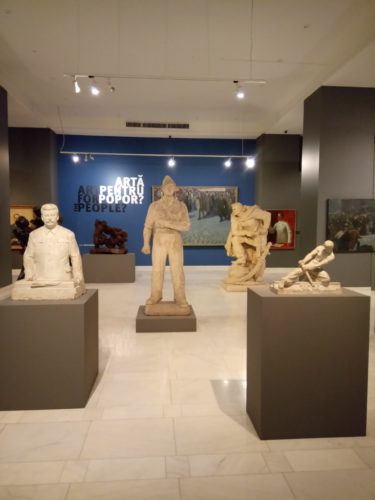
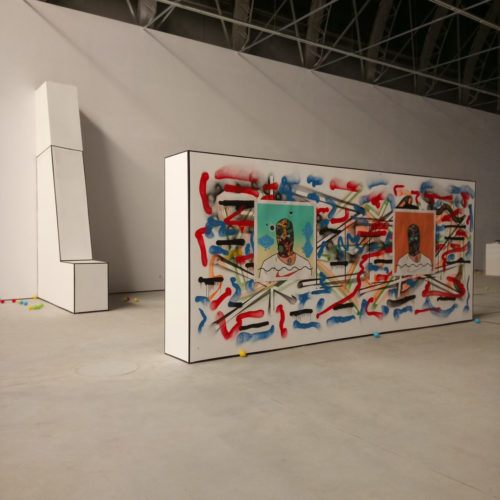
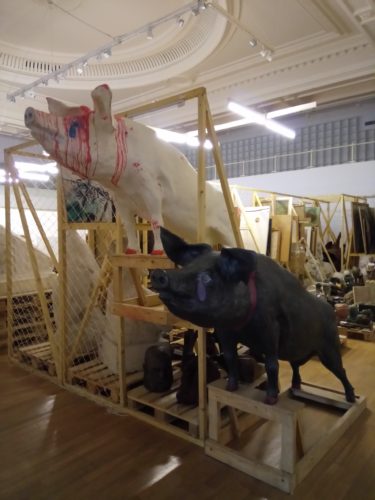
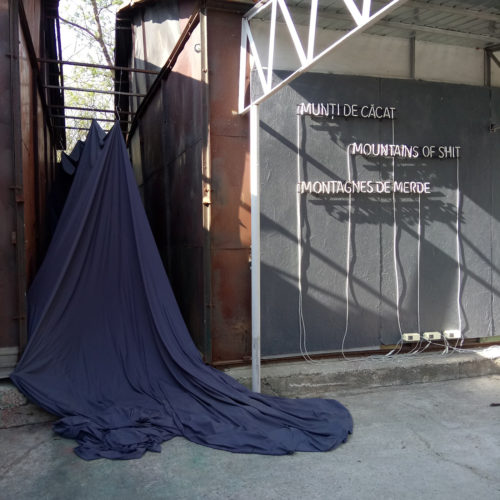
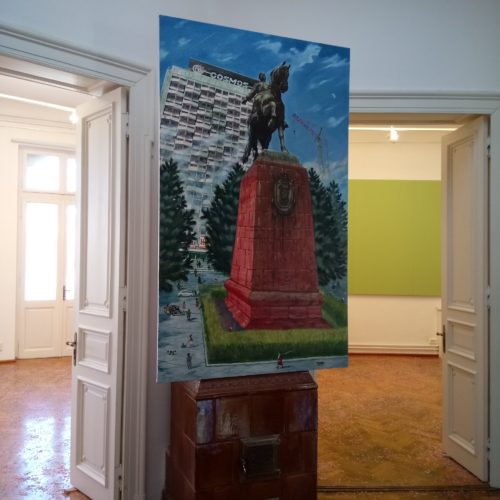
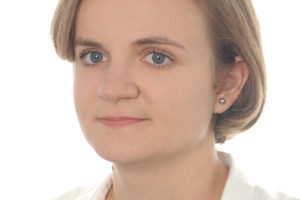
Comments are closed here.